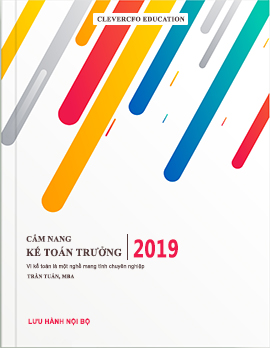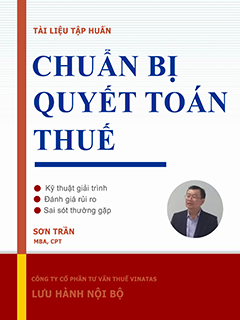Accounting Dictionary – 34 - FIN
FACTORING is the practice of buying debt at a discount, e.g., if somebody owes you $10,000 payable within a year, a factoring lender may pay you $9,000 for the debt. You receive $9,000 cash quickly, but at the cost of the $1,000 discount.
FACTORY OVERHEAD is the costs of operating a factory which cannot be assigned directly to a specific department or product.
FAIR LABOR STANDARDS ACT is a U.S. federal law that enforces a group of minimum standards that employers must abide by when hiring employees.
FAIR MARKET VALUE is the price at which a willing seller will sell and a willing buyer will buy, in an arms- length transaction, when neither is under compulsion to sell or buy and both have reasonable knowledge of relevant facts.
FAIR VALUE, under GAAP, is the amount at which an asset could be bought or sold in a current transaction between willing parties, other than in liquidation. On the other side of the balance sheet, the fair value of a liability is the amount at which that liability could be incurred or settled in a current transaction between willing parties, other than in liquidation.
F.A.S. (FREE ALONG SIDE), e.g. “F.A.S. New York”, means that, for instance, if goods are shipped from the State of Nevada in the U.S. to Madrid, Spain, no charges for shipment are made to the importer until the goods are "free alongside the vessel" in New York. After this point, charges may be applied to the importer.
FASB see Financial Accounting Standards Board.
FBWT, in finance, is Fund Balance With Treasury.
FCIA (FOREIGN CREDIT INSURANCE ACT) is an EximBank program that offers credit insurance against losses due to political conflict or buyer default.
FEDERAL UNEMPLOYMENT TAX ACT (FUTA) is a U.S, federal law providing guidelines for the unemployment compensation system. A Federal tax is paid by all liable employers to fund the administration of Federal and State unemployment insurance programs and the extended benefits program. FUTA provides for payments of unemployment compensation to workers who have lost their jobs. Most employers pay both a federal and a state unemployment tax.
FEE ABSOLUTE see FEE SIMPLE.
FEE SIMPLE is absolute ownership of real property; owner is entitled to the entire property. This includes unencumbered right of disposition during his/her life and upon death the real property passes to his/her heirs. Also known as FEE SIMPLE ABSOLUTE and FEE ABSOLUTE.
FEE SIMPLE ABSOLUTE see FEE SIMPLE.
FF&E is Furniture, Fixtures & Equipment (in real estate).
FFO - FUNDS FROM OPERATIONS is used by real estate and other investment trusts to present the cash flow from trust operations i.e., earnings plus depreciation and amortization.
FGI see FINISHED GOODS INVENTORY.
FICA (FEDERAL INSURANCE CONTRIBUTIONS ACT) is the U.S. law requiring U.S. employers to match the amount of Social Security tax deducted from an employee's paycheck.
FICTITIOUS NAME is often referred to as a DBA, "Doing Business As," a fictitious name is frequently used by sole proprietors or partnerships to provide a name, other than those of the owners or partners, under which the business will operate.
FIDUCIARY is a person or business (for example, a bank or stock brokerage) who has the power and obligation to act for another (often called the beneficiary) under circumstances which require total trust, good faith and honesty.
FIFO (first-in, first-out) is an inventory cost flow whereby the first goods purchased are assumed to be the first goods sold so that the ending inventory consists of the most recently purchased goods.
FINANCE CHARGE is the total dollar amount your loan will cost you. It includes all interest payments for the life of the loan, any interest paid at closing, your origination fee and any other charges paid to the lender and/or broker. In real estate, appraisal, credit report and title search fees are normally not included in the finance charge calculation.
FINANCIAL ANALYSIS is analysis of a company's financial statement, usually by accountants or financial analysts.
FINANCIAL ACCOUNTING is the area of accounting concerned with reporting financial information to interested external parties.
FINANCIAL ACCOUNTING STANDARDS BOARD (FASB) is a professional organization which develops accounting principles.
FINANCIAL GUARANTEE INSURANCE is insurance created to cover losses from specified financial transactions.
FINANCIAL INCOME is that income that is contained within the financial statements of an entity. Financial income normally is not in alignment with taxable income reported in income tax returns. See TAXABLE INCOME.
FINANCIAL LEVERAGE is the use of debt to increase the expected return on equity. Financial leverage is measured by the ratio of debt to debt plus equity.
FINANCIAL RATIO is the result of dividing one financial statement item by another. Ratios help analysts interpret financial statements by focusing on specific relationships.
FACTORING is the practice of buying debt at a discount, e.g., if somebody owes you $10,000 payable within a year, a factoring lender may pay you $9,000 for the debt. You receive $9,000 cash quickly, but at the cost of the $1,000 discount.
FACTORY OVERHEAD is the costs of operating a factory which cannot be assigned directly to a specific department or product.
FAIR LABOR STANDARDS ACT is a U.S. federal law that enforces a group of minimum standards that employers must abide by when hiring employees.
FAIR MARKET VALUE is the price at which a willing seller will sell and a willing buyer will buy, in an arms- length transaction, when neither is under compulsion to sell or buy and both have reasonable knowledge of relevant facts.
FAIR VALUE, under GAAP, is the amount at which an asset could be bought or sold in a current transaction between willing parties, other than in liquidation. On the other side of the balance sheet, the fair value of a liability is the amount at which that liability could be incurred or settled in a current transaction between willing parties, other than in liquidation.
F.A.S. (FREE ALONG SIDE), e.g. “F.A.S. New York”, means that, for instance, if goods are shipped from the State of Nevada in the U.S. to Madrid, Spain, no charges for shipment are made to the importer until the goods are "free alongside the vessel" in New York. After this point, charges may be applied to the importer.
FASB see Financial Accounting Standards Board.
FBWT, in finance, is Fund Balance With Treasury.
FCIA (FOREIGN CREDIT INSURANCE ACT) is an EximBank program that offers credit insurance against losses due to political conflict or buyer default.
FEDERAL UNEMPLOYMENT TAX ACT (FUTA) is a U.S, federal law providing guidelines for the unemployment compensation system. A Federal tax is paid by all liable employers to fund the administration of Federal and State unemployment insurance programs and the extended benefits program. FUTA provides for payments of unemployment compensation to workers who have lost their jobs. Most employers pay both a federal and a state unemployment tax.
FEE ABSOLUTE see FEE SIMPLE.
FEE SIMPLE is absolute ownership of real property; owner is entitled to the entire property. This includes unencumbered right of disposition during his/her life and upon death the real property passes to his/her heirs. Also known as FEE SIMPLE ABSOLUTE and FEE ABSOLUTE.
FEE SIMPLE ABSOLUTE see FEE SIMPLE.
FF&E is Furniture, Fixtures & Equipment (in real estate).
FFO - FUNDS FROM OPERATIONS is used by real estate and other investment trusts to present the cash flow from trust operations i.e., earnings plus depreciation and amortization.
FGI see FINISHED GOODS INVENTORY.
FICA (FEDERAL INSURANCE CONTRIBUTIONS ACT) is the U.S. law requiring U.S. employers to match the amount of Social Security tax deducted from an employee's paycheck.
FICTITIOUS NAME is often referred to as a DBA, "Doing Business As," a fictitious name is frequently used by sole proprietors or partnerships to provide a name, other than those of the owners or partners, under which the business will operate.
FIDUCIARY is a person or business (for example, a bank or stock brokerage) who has the power and obligation to act for another (often called the beneficiary) under circumstances which require total trust, good faith and honesty.
FIFO (first-in, first-out) is an inventory cost flow whereby the first goods purchased are assumed to be the first goods sold so that the ending inventory consists of the most recently purchased goods.
FINANCE CHARGE is the total dollar amount your loan will cost you. It includes all interest payments for the life of the loan, any interest paid at closing, your origination fee and any other charges paid to the lender and/or broker. In real estate, appraisal, credit report and title search fees are normally not included in the finance charge calculation.
FINANCIAL ANALYSIS is analysis of a company's financial statement, usually by accountants or financial analysts.
FINANCIAL ACCOUNTING is the area of accounting concerned with reporting financial information to interested external parties.
FINANCIAL ACCOUNTING STANDARDS BOARD (FASB) is a professional organization which develops accounting principles.
FINANCIAL GUARANTEE INSURANCE is insurance created to cover losses from specified financial transactions.
FINANCIAL INCOME is that income that is contained within the financial statements of an entity. Financial income normally is not in alignment with taxable income reported in income tax returns. See TAXABLE INCOME.
FINANCIAL LEVERAGE is the use of debt to increase the expected return on equity. Financial leverage is measured by the ratio of debt to debt plus equity.
FINANCIAL RATIO is the result of dividing one financial statement item by another. Ratios help analysts interpret financial statements by focusing on specific relationships.









